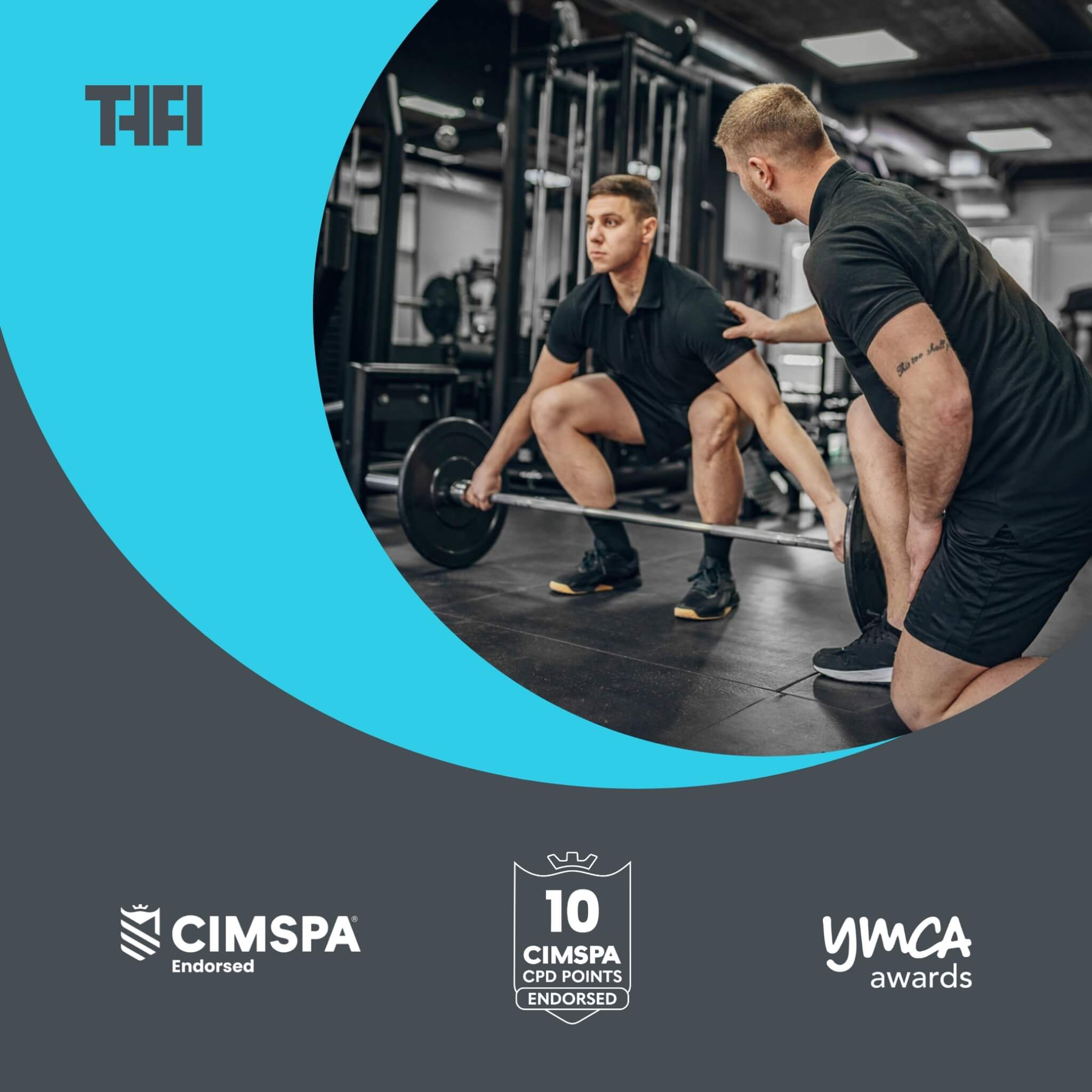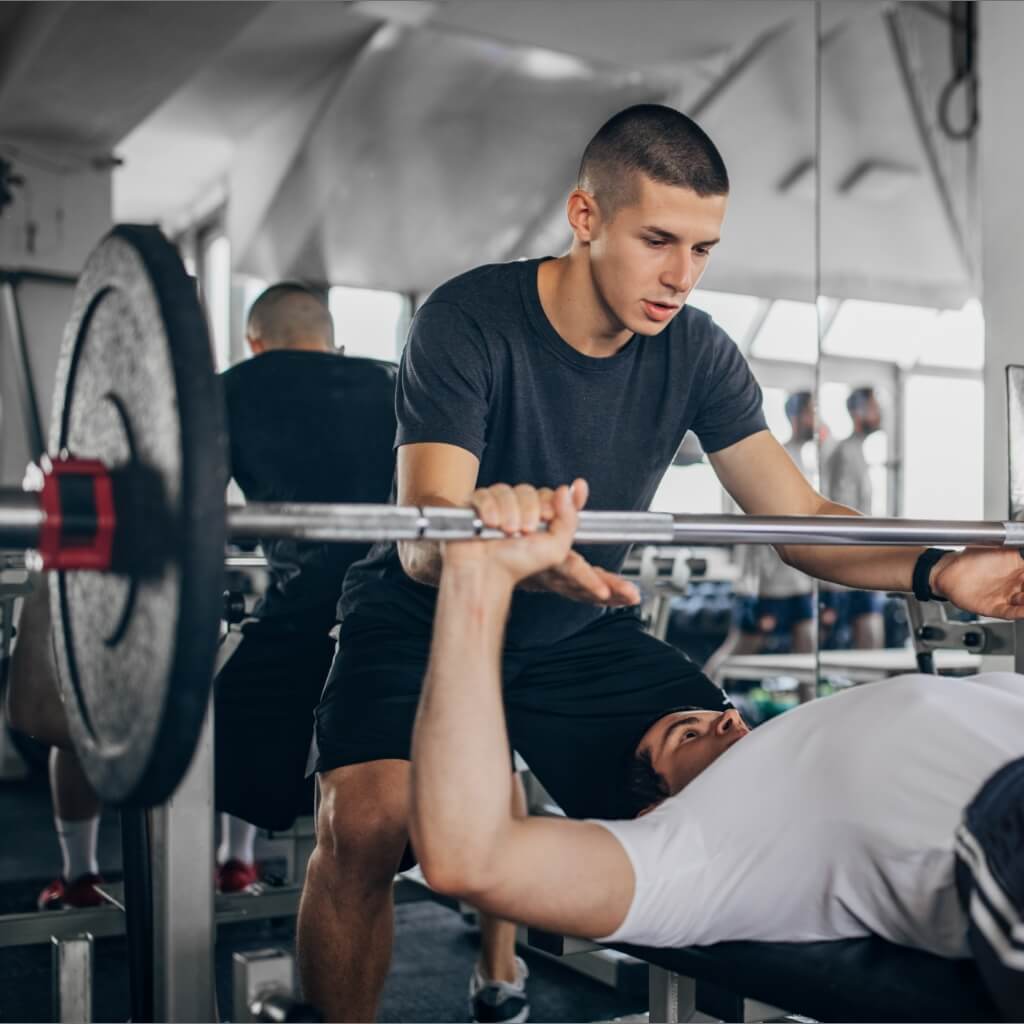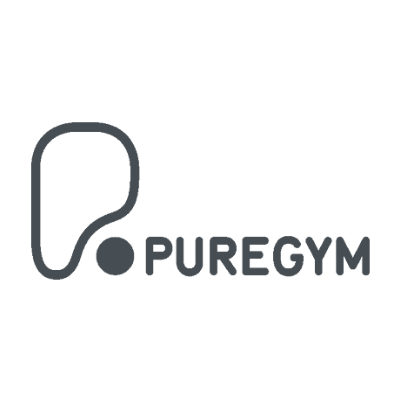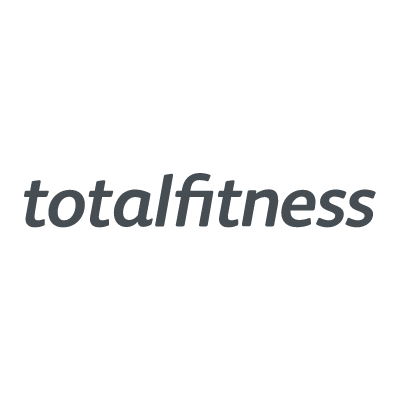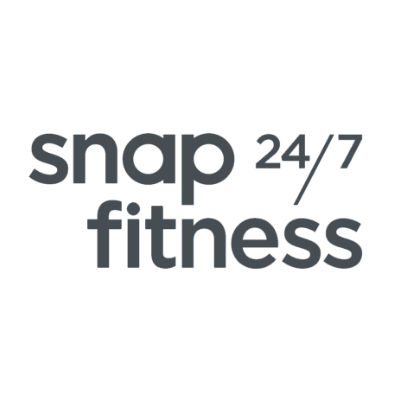A Personal Trainer's Guide to High Intensity Interval Training

Many people trainers struggle with two things – keeping clients motivated, and helping them achieve noticeable results quickly.
Without a diverse toolbox, you risk losing clients to slow progress and boredom
While it’s tempting to turn to the latest fitness fad or gimmick to give people novelty, there’s one tried-and-tested training method that never fails.
High-Intensity Interval Training (HIIT) might just be the solution you need, and it’s been around for over 30 years for a reason – because it works.
Even now, the best personal trainers turn to HIIT because it gives clients a high-energy workout that’s fast and fun while speeding up fat loss and rapidly improving their fitness.
This article explores the benefits for personal trainers of using HIIT training in your workouts, and also the drawbacks you need to consider.
It gives you practical guidance for implementing different HIIT protocols in your training sessions effectively – whether you’re working with beginners or seasoned trainees.
And shows you how to design, structure, and customise your HIIT workouts for diverse clients with example sessions you can use.
Here’s everything you need to know to give your clients workouts they’ll keep coming back for...
The benefits of HIIT for clients
High-Intensity Interval Training (HIIT) is more than just another fitness fad – it's a really versatile training tool in your arsenal that can make your sessions fun, fast, and impactful.
By incorporating the principles of HIIT into your training programmes, you can deliver impressive results that keep clients coming back for more. Here's why HIIT can be such a game-changer for you and your clients...
Rapid fat loss
Metabolic boost
One of the most significant advantages of HIIT is its ability to supercharge the metabolism. Research shows that HIIT can increase metabolic rate for hours after a workout is finished, a phenomenon known as Excess Post-Exercise Oxygen Consumption (EPOC) . This means your clients will continue to burn calories long after they've left the gym, which can lead to faster and more noticeable fat loss (if they are also managing their diet well). When clients see quick results, they're more likely to stay motivated and stick with their training programme.
Afterburn effect
The afterburn effect is a crucial component of HIIT’s effectiveness. During high-intensity intervals, the body uses a lot of energy, creating an oxygen deficit. To recover, the body must work harder to replenish oxygen levels, which in turn burns more calories. This prolonged calorie-burning effect can significantly enhance fat loss, making HIIT a highly efficient workout strategy for clients looking to shed pounds quickly.
Time efficiency
Maximising results in minimal time
In today’s fast-paced world, clients often struggle to find time for lengthy workout sessions. HIIT addresses this issue by providing a highly effective workout in a fraction of the time. A typical HIIT session can be completed in 20-30 minutes but can deliver the same, if not greater, benefits compared to traditional workouts that last twice as long . This efficiency makes it easier for clients to commit to regular exercise, ensuring consistent progress and satisfaction with their results.
Ideal for busy schedules
For many clients, balancing work, family, and personal commitments can make finding time to exercise challenging. HIIT’s time-efficient nature makes it an ideal solution. Whether your clients are young professionals with hectic schedules or parents juggling multiple responsibilities, HIIT can fit seamlessly into their lives. Offering flexible, quick, and effective workout options can significantly enhance your appeal as a personal trainer, attracting and retaining clients who need workouts that fit their busy lives.
Cardiovascular health
Improved heart function
HIIT is not just about losing weight; it's also about improving overall health. Studies have shown that HIIT can significantly boost cardiovascular health by enhancing heart function and efficiency . The intense bursts of activity force the heart to pump more efficiently, lowering blood pressure and improving circulation. For clients, these health benefits are a major plus, and as their trainer, you'll be seen as someone who genuinely cares about their long-term well-being.
Enhanced endurance
The repeated high-intensity efforts in HIIT workouts also build endurance. By pushing the body to its limits and then allowing it to recover, HIIT trains the heart and lungs to perform better under stress. This increased endurance not only benefits clients during their workouts but also makes daily activities easier and less tiring. Highlighting these improvements in endurance can help clients appreciate the broader benefits of HIIT, reinforcing their commitment to your training programme.
Muscle preservation
Balancing cardio and strength
One of the unique benefits of HIIT is its ability to preserve muscle mass while promoting fat loss. Traditional cardio workouts, like running, can lead to muscle loss, which can be a concern for clients looking to tone and define their muscles. HIIT, however, combines the benefits of cardio with strength training elements, ensuring that clients burn fat while maintaining muscle tissue.
The drawbacks of HIIT for clients
While HIIT is a highly effective training method, it's not without its drawbacks. As a personal trainer, it’s crucial to understand these limitations to provide balanced and safe training programmes for the wide range of clients you work with.
Risk of injury
High-impact movements
HIIT often involves high-impact exercises such as jumping, sprinting, and other explosive movements. These can be hard on the joints, especially for clients who are not used to such intensity. The risk of injury is higher compared to low-impact exercises, so it’s essential to monitor your clients closely and modify exercises as needed to prevent strain and injury.
Need for proper technique
Due to the intense nature of HIIT, maintaining proper form is crucial to avoid injuries. Clients might rush through movements to keep up with the pace, compromising their technique. As a trainer, you need to emphasise the importance of proper form and provide clear, step-by-step instructions. This might involve spending extra time on technique during initial sessions to ensure clients perform exercises safely and effectively.
Not suitable for everyone
Beginners and HIIT
HIIT is not always suitable for beginners who may lack the foundational fitness level required to safely perform high-intensity exercises. For these clients, jumping straight into high-energy HIIT workouts can be demotivating if they struggle, and even dangerous because of the higher chance of injury. It’s often better to start with lower-intensity workouts and gradually build up their fitness levels before introducing HIIT. This approach helps to ensure they are physically prepared for the demands of HIIT workouts.
Health considerations
If your clients have existing health conditions such as heart problems, high blood pressure, or joint issues, they may find HIIT too strenuous. It’s important to conduct thorough health screenings and consult with clients’ healthcare providers if necessary before starting a HIIT programme. Your number one priority is creating a safe training experience for everyone you work with, so tailoring workouts to the individual’s fitness level or health needs can prevent any adverse effects.
Recovery time
Importance of rest days
HIIT places significant stress on the body, so making sure you give your clients adequate recovery time between sessions is essential. Without proper rest, clients risk overtraining, which can lead to fatigue, decreased performance, and injuries. Emphasising the importance of rest days is crucial to ensure clients’ bodies have time to repair and strengthen. Including rest or low-intensity days in their weekly workout schedule can help maintain their progress and prevent burnout.
Avoiding overtraining
You might find that some overenthusiastic clients may want to perform HIIT sessions too frequently, thinking more is better. However, overtraining can lead to serious consequences such as chronic fatigue, muscle damage, and a weakened immune system. As a trainer, it’s your responsibility to educate clients about the risks of overtraining and to design balanced workout plans that include appropriate recovery periods. This not only ensures their safety but will also make sure they can continue to perform at their best and get the results they want from training.
How to implement HIIT effectively
Implementing HIIT effectively requires a thorough understanding of the techniques and principles behind it. As a personal trainer, mastering these elements will ensure your clients achieve the best possible results while minimising the risks.
Designing a HIIT program
Assessing client fitness levels
Before you start designing a HIIT programme, it's crucial to assess your client’s current fitness level. This includes evaluating their cardiovascular endurance, strength, flexibility, and overall health. You might do a Cooper Test to see how far they can run in 12 minutes, time them on a 1.5 mile run, or assess their bodyweight strength with a max-rep test on press-ups or bodyweight squats. Understanding their fitness baseline helps you tailor the intensity and complexity of the HIIT sessions to their capabilities, ensuring a safe and effective workout.
Setting clear goals
Setting clear, achievable goals is essential for keeping your clients motivated and focused. Whether the aim is to lose weight, improve cardiovascular health, or increase muscle strength, having specific goals allows you to design a HIIT programme that aligns with your client's aspirations. Regularly revisiting and adjusting these goals based on progress can keep clients engaged and committed.
Structuring HIIT workouts
Warm-up and cool down
A proper warm-up and cool down are vital components of any HIIT workout. The warm-up prepares the body for intense activity by increasing heart rate, circulation, and muscle temperature, reducing the risk of injury. A typical warm-up should last 5-10 minutes and include dynamic stretches and light aerobic exercises. Similarly, cooling down helps gradually lower the heart rate and prevent muscle stiffness. This phase should also last 5-10 minutes and include static stretching and deep breathing exercises.
Work-to-rest ratios
The effectiveness of HIIT relies heavily on the appropriate work-to-rest ratios. Common ratios include 30 seconds of intense work followed by 30 seconds of rest (1:1), or 20 seconds of work followed by 10 seconds of rest (2:1, known as Tabata). The ratio you choose should match your client's fitness level and goals. Beginners may start with longer rest periods, while more advanced clients can handle shorter rests and longer work intervals. Adjusting these ratios over time can help clients continue to challenge themselves and progress.
Essential HIIT exercises
Bodyweight moves
Bodyweight exercises are excellent for HIIT because they require no equipment and can be performed anywhere. Some effective bodyweight moves include burpees, jumping jacks, high knees, mountain climbers, and push-ups. These exercises are highly effective for building cardiovascular endurance, strength, and agility. Incorporate a variety of bodyweight moves to keep workouts engaging and to target different muscle groups.
Equipment-based options
While bodyweight exercises are great, incorporating equipment can add variety and increase the intensity of HIIT workouts. Kettlebells, dumbbells, resistance bands, and medicine balls are all excellent tools. For example, kettlebell swings, dumbbell thrusters, resistance band sprints, and medicine ball slams can significantly enhance the effectiveness of HIIT sessions. Using equipment allows for more complex movements that can challenge clients and prevent workout monotony.
Sample HIIT workouts for different clients
Creating tailored HIIT routines for different clients ensures that their workouts are both effective and safe. Whether your client is a beginner, intermediate, or advanced, customising their HIIT routine can help them achieve their fitness goals more efficiently.
Beginner HIIT workout
Low-impact intervals
For beginners, it’s crucial to start with low-impact intervals to minimise the risk of injury and build confidence. A beginner HIIT workout might include the following:
1. Warm-up: 5 minutes of light jogging or brisk walking.
2. Interval 1: 30 seconds of star jumps, followed by 30 seconds of rest.
3. Interval 2: 30 seconds of bodyweight squats, followed by 30 seconds of rest.
4. Interval 3: 30 seconds of lunges, followed by 30 seconds of rest.
5. Interval 4: 30 seconds of seated knee lifts, followed by 30 seconds of rest.
6. Cool down: 5 minutes of stretching.
This routine is designed to be easy on the joints while still providing a cardiovascular challenge. It's a great way to introduce clients to the intensity of HIIT without overwhelming them.
Building a foundation
Building a strong foundation is key for beginners. The initial focus should be on mastering the basic movements and gradually increasing intensity. Here’s an example progression:
Week 1-2: Perform the low-impact routine twice a week.
Week 3-4: Increase to three times a week, adding an extra interval (e.g., 30 seconds of stationary lunges).
Week 5-6: Introduce slightly more intense exercises, such as 30 seconds of step-ups on a low platform.
By progressively increasing the intensity and complexity of the exercises, clients can build their strength, endurance, and confidence. This methodical approach helps to prevent injuries and ensures that they are ready to advance to more challenging HIIT routines in the future.
Implementing these tailored HIIT routines for beginners can significantly enhance their fitness journey. By starting with low-impact intervals and gradually building a solid foundation, you help clients gain the necessary skills and conditioning to progress safely and effectively. This approach not only improves their physical health but also boosts their motivation and trust in your training expertise.
Intermediate HIIT workout
Increasing intensity
For clients who have built a solid fitness foundation, it’s time to increase the intensity of their HIIT workouts. Intermediate routines should challenge their cardiovascular system while incorporating more complex movements. Here’s an example of an intermediate HIIT workout:
1. Warm-up: 5 minutes of dynamic stretching and jogging.
2. Interval 1: 40 seconds of high knees, followed by 20 seconds of rest.
3. Interval 2: 40 seconds of push-ups, followed by 20 seconds of rest.
4. Interval 3: 40 seconds of jump squats, followed by 20 seconds of rest.
5. Interval 4: 40 seconds of plank to knee taps, followed by 20 seconds of rest.
6. Interval 5: 40 seconds of mountain climbers, followed by 20 seconds of rest.
7. Interval 6: 40 seconds of alternating lunges, followed by 20 seconds of rest.
8. Cooldown: 5 minutes of static stretching.
This workout introduces longer work intervals and shorter rest periods, increasing the overall intensity and calorie burn.
Combining cardio and strength
At the intermediate level, combining cardio and strength exercises in HIIT routines can maximise results. This approach helps clients build muscle while improving cardiovascular fitness. An example routine might include:
1. Warm-up: 5 minutes of dynamic stretches and light cardio
2. Interval 1: 40 seconds of kettlebell swings, followed by 20 seconds of rest.
3. Interval 2: 40 seconds of burpees, followed by 20 seconds of rest.
4. Interval 3: 40 seconds of dumbbell thrusters, followed by 20 seconds of rest.
5. Interval 4: 40 seconds of sprinting in place, followed by 20 seconds of rest.
6. Interval 5: 40 seconds of renegade rows, followed by 20 seconds of rest.
7. Interval 6: 40 seconds of jumping lunges, followed by 20 seconds of rest.
8. Cool down: 5 minutes of stretching.
Incorporating both cardio and strength moves in a HIIT session provides a comprehensive workout that challenges different muscle groups and energy systems. This balanced approach not only enhances muscle strength and endurance but also keeps workouts varied and engaging.
Advanced HIIT workout
Pushing limits
For advanced clients, HIIT workouts should push their limits, challenging both their physical and mental endurance. These clients are typically well-conditioned and ready for higher intensity and complexity. An advanced HIIT workout might look like this:
1. Warm-up: 5 minutes of dynamic stretching, including leg swings, arm circles, and torso twists.
2. Interval 1: 50 seconds of sprint intervals, followed by 10 seconds of rest.
3. Interval 2: 50 seconds of plyometric push-ups, followed by 10 seconds of rest.
4. Interval 3: 50 seconds of box jumps, followed by 10 seconds of rest.
5. Interval 4: 50 seconds of alternating kettlebell snatches, followed by 10 seconds of rest.
6. Interval 5: 50 seconds of tuck jumps, followed by 10 seconds of rest.
7. Interval 6: 50 seconds of battle ropes, followed by 10 seconds of rest.
8. Cool down: 5 minutes of static stretching and deep breathing exercises.
This routine features shorter rest periods and longer work intervals, demanding more stamina and resilience.
Incorporating complex moves
Advanced HIIT workouts should include complex movements that require a higher level of coordination, strength, and agility. These exercises not only enhance physical
performance but also keep the workouts engaging and mentally stimulating. An example routine might include:
1. Warm-up: 5 minutes of dynamic movements and mobility drills.
2. Interval 1: 50 seconds of burpee box jumps, followed by 10 seconds of rest.
3. Interval 2: 50 seconds of kettlebell clean and press, followed by 10 seconds of rest.
4. Interval 3: 50 seconds of pistol squats, followed by 10 seconds of rest.
5. Interval 4: 50 seconds of TRX atomic push-ups, followed by 10 seconds of rest.
6. Interval 5: 50 seconds of plyometric lunges, followed by 10 seconds of rest.
7. Interval 6: 50 seconds of rope climbs or modified rope climbs, followed by 10 seconds of rest.
8. Cool down: 5 minutes of comprehensive stretching, focusing on major muscle groups.
Incorporating these complex moves into your HIIT routines challenges your advanced clients in new ways. It keeps them constantly improving, challenges them, and prevents monotony which can make clients give up and look elsewhere.
By pushing limits and integrating more intricate exercises, you help your clients reach peak physical condition and achieve their highest potential.
If you want to build deeper knowledge of the training methods that your clients are looking for, explore our range of CPD courses here.









